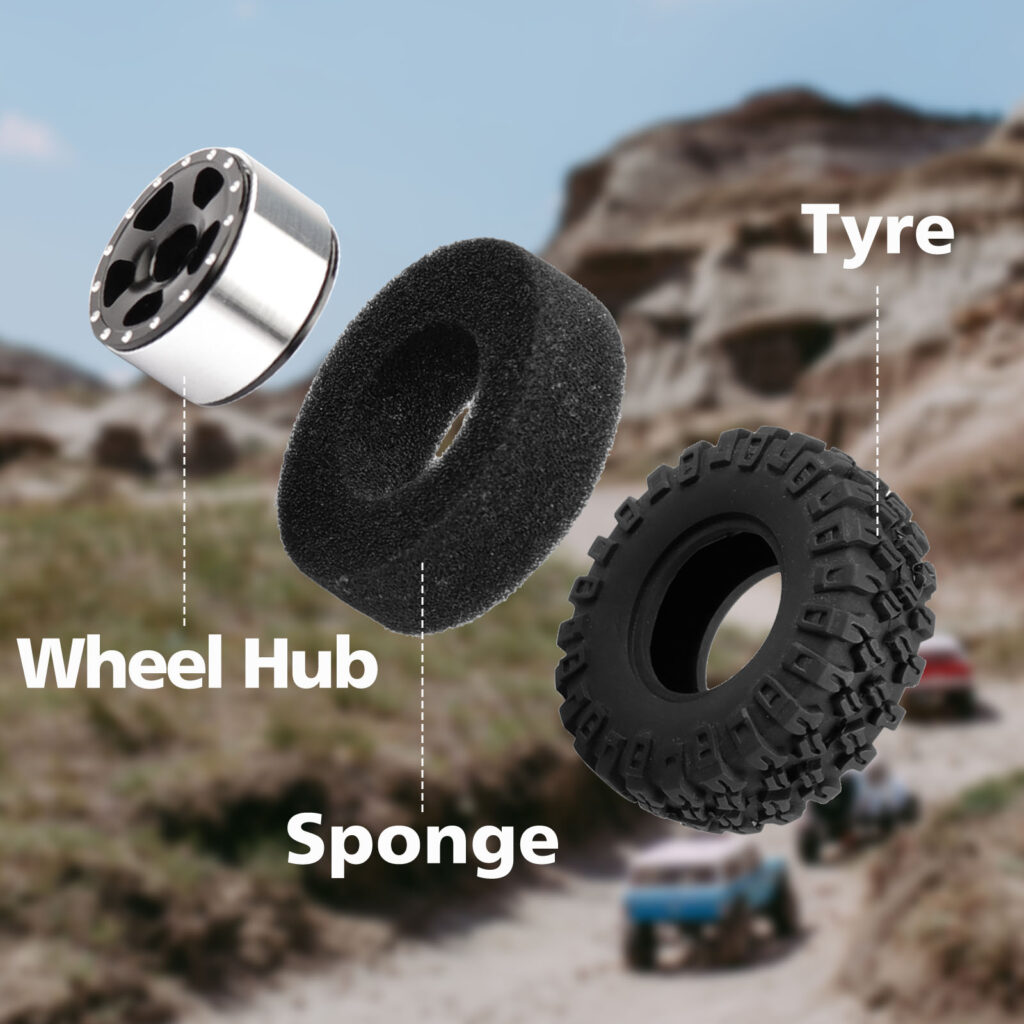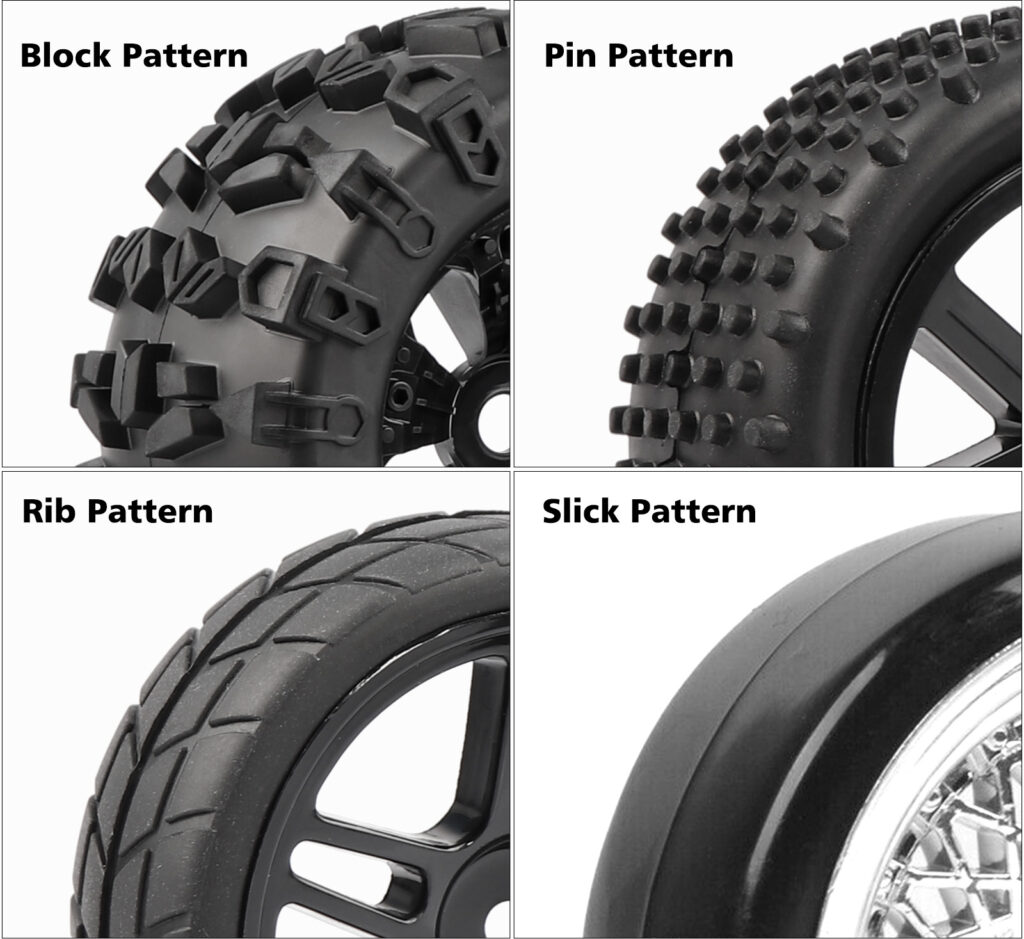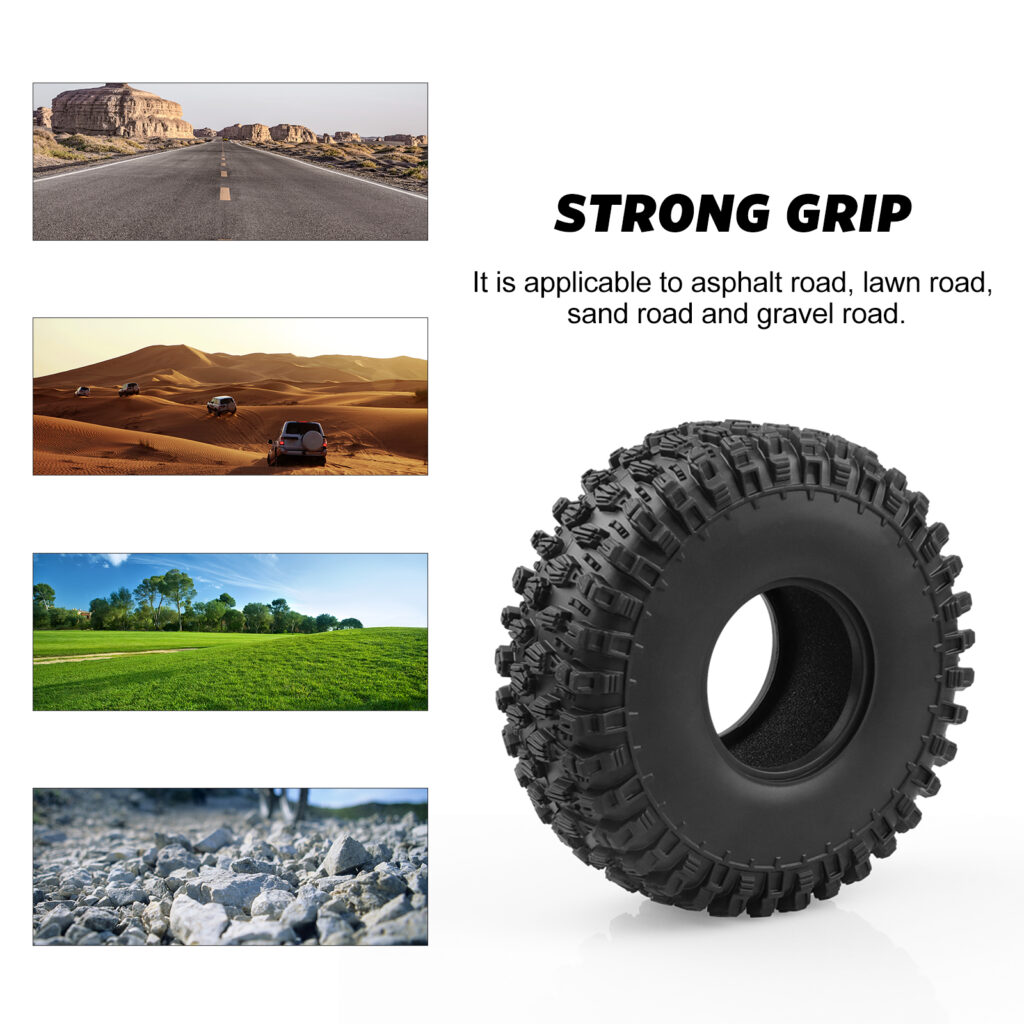Introduction:
In the exciting world of remote control model car racing, several key factors affect the performance of vehicles.
One often overlooked and yet crucial component is the tires. Remote control model car tires play a vital role in achieving optimal traction, handling, and overall performance on various track surfaces.
In this article, we will delve into the composition and function of these specialized tires, exploring the materials used, design considerations, and their impact on vehicle performance.
1. Tire Composition:
Remote control model car tires are carefully designed and engineered to deliver optimal performance on different track surfaces.
The tire’s composition greatly influences its traction, durability, and handling characteristics. Let’s take a closer look at the components commonly used in remote control model car tires:

- Rubber Compound – Tyre: The primary material used in remote control model car tires is a specially formulated rubber compound.
- These compounds are developed to strike a balance between traction and durability. Different types of rubber compounds, ranging from soft to hard, are used depending on specific track conditions and temperatures.
- Soft compound materials provide excellent grip on high-traction surfaces, emphasizing remarkable traction. The most typical representative in the model car world is the crawler, which requires exceptionally soft yet supportive tires for both climbing competitions and everyday play.
- Hard compound materials are suitable for low-traction and abrasive terrains. Vehicles like monster trucks and off-road cars require tires that are more durable and provide stronger support.
- Wheel Hub: The wheel hub is the primary support structure within the tire assembly. Common materials used for wheel hubs include synthetic plastics, metals, and carbon fiber, with synthetic plastics being the most common.
- Synthetic plastic offers good resilience, minimizing damage in case of collisions, as well as excellent strength performance. Consequently, almost all types of model cars have wheel hubs made of this material. Metal materials are heavier and more robust, commonly found in models requiring higher stability, such as crawlers.
- Carbon fiber, on the other hand, combines high strength with low weight characteristics. Its cool appearance also attracts many enthusiasts, despite the relatively high cost.
- Foam Insert: Remote control model car tires often feature foam inserts inside the tire carcass. These inserts provide support and stability while enhancing the tire’s ability to maintain its shape during high-speed corners.
- High-quality foam inserts aid in shock absorption, reduce vibrations, and provide smoother driving experiences.
2. Tread Design:
The tread design of a tire plays a crucial role in determining its overall performance characteristics. Different tread designs are utilized to optimize traction, cornering ability, and stability.
Here are several common tread designs found in remote control model car tires:

- Block Pattern: Block patterns consist of interconnected blocks that deliver excellent traction on various surfaces, making them versatile tires suitable for both on-road and off-road racing. This pattern provides optimal grip during acceleration, braking, and cornering.
- Pin Pattern: Pin patterns consist of individual pins or spikes on the tire surface. These tires perform well on loose soil or grassy terrains since the pins dig into the ground, providing excellent traction. The length and density of the pins can vary, allowing adjustments based on specific track conditions.
- Rib Pattern: Rib patterns consist of a series of parallel ribs that run across the tire surface. These tires have low rolling resistance and provide enhanced stability on high-speed straight tracks. Ribbed tires perform well on smooth paved tracks where precise control and minimal lateral movement are critical.
- Slick Pattern: There is a category of model cars called drift cars, which imitate drifting races in real life. The purpose of these tires is to maximize low-friction performance, so they usually have a smooth slick surface without any tread pattern. These tires are made of high-hardness rubber compounds or plastics.
3. Tire Size and Profile:

The size and profile of the tire have a significant impact on the performance and handling characteristics of model cars.
Remote control model car tires are available in various diameters, widths, and ratios, suitable for different racing categories and track surfaces.
These factors affect tire traction, cornering ability, and overall stability.
Choosing smaller diameter tires for vehicles in the same scale provides faster acceleration, sharper handling, and better responsiveness.
On the other hand, larger diameter tires offer increased stability, durability, and higher top speeds. Selecting the appropriate tire size and profile ensures a balanced setup for optimal performance on any track.
Conclusion:
Remote control model car tires are far more complex and specialized than they may initially appear. The composition, tread design, size, and wheel hubs of these tires work together to provide optimal performance on various tracks.
With a deep understanding of their composition and function, model car enthusiasts can choose the right tires to maximize their vehicle’s performance.


